On Haiti’s Earthquake Anniversary: Still Waiting for Godot
“Nothing happens. Nobody comes, nobody goes. It’s awful!” – Samuel Beckett, in Waiting for Godot
Months after Haiti’s January 12, 2010 earthquake, people were questioning the failure to deliver promised aid funds. Today they research the disappearance of these funds. The result is the same. No help will come. No help has come.
Elements to accelerate the country’s decline quickly came into place. By Summer 2010, the homelessness from the disaster was exacerbated by tropical storms that packed massive quantities of water because of climate change. In October, a cholera epidemic took hold, starting from a Nepalese base of the United Nations. An epidemic was predictable, though the specifics agents of infection were not, and Cuban health workers, rather than the non-governmental organizations (NGO) that became rich from the disaster, did most of the work to control the disease, as expected.
In the confusion, unscrupulous individuals in and around the government began to grab lands from Haiti’s small farmers, causing more homelessness and less agriculture. The usurpation of titles continues, but it is now done mostly by official governmental decree. Illegal adoptions and outright kidnappings of Haiti’s youngest citizens boomed in Summer 2010. These have not been prosecuted but instead legalized ex post facto.
From the start, Bill Clinton’s so-called Interim Haiti Recovery Commission (IHRC), an international group of wealthy businessmen, backed by an expanded army from the UN (MINUSTAH), forced themselves on the country to make it liquidate its commons to them and their friends at fire sale prices. The IHRC has disappeared as an entity because it is now the government. One of its formers members became Haiti’s Prime Minister; other members Gregory Mevs, of Haiti’s wealthy family, and Bill Clinton currently advise Haiti’s president. The names of possible presidents and prime ministers are hardly worth noting. They often change. They don’t matter.
Given that Haiti’s GDP grew 4.3 percent in 2013, money did circulate through the country. Funds from aid organizations like USAID do not help Haitians but instead support US corporations that need to unload defective goods, and foreign workers whose job is to displace Haiti’s middle class. Funds from the International Monetary Fund (IMF), Inter-American Development Bank (IDB), World Bank and the like continue to plunge Haitians deeper into debt. As rich investors build hotels for tourism, the displaced farmers are shipped to work for foreign exchange throughout Latin America, where they are treated with the sort of disdain reserved only for those scorned by their own nation. All this was clear as early as six months after the earthquake when I wrote the article below.
Four years have passed… Haitians are still waiting. For whom, if not ourselves?
Haiti: A Six-Month Report Without Cute Baby Pictures or Demands for Aid Money
Well, yes, July tends to come six months after January. All agree that little help has arrived for the 1.5 million Haitians rendered homeless by the earthquake. But why arbitrarily pick July 12, 2010 as a milestone? Why not May 27, or August 10, for instance?
A rash of six-month reports have formed part of a press campaign, which I can only characterize as:
“Show me the money!”
because the articles go on, ad nauseum, about undisbursed aid funds, or
“See the cute adoptable Haitian babies!”
because the news suggest that all the country’s problems would be solved by spiriting away its children. These articles have had their intended effect of getting Haiti into debt again and boosting international adoptions of Haitian children. I will deal with this later. But first things first.
Earthquakes, storms and floods
On July 18, 2010 the northern Haitian city of Gonaives was shaken by a 4.3-magnitude tremor. This quake happened along the Septentrional Fault, rather than the Enriquillo-Plantain Garden Fault (EPGF) that caused the January 12 earthquake. The same study that correctly predicted the 7.2 earthquake in southern Haiti also noted that the Septentrional Fault holds the potential for an earthquake of magnitude 7.5 or greater, the next time in the Dominican Republic [Geophys. J. Int. (2008) 174, 889–903].
The tremor that occurred around 2 a.m. on July 18 was only the first of a series of disasters that day. Later a violent tropical storm battered northern and western Haiti, including the towns of Saint Marc, Arcahaie, and Montrouis. The Montrouis river swelled to more than 20 feet and overflowed its banks, carrying with it the neighboring villages and farm animals. At least three people died, and over 150 new individuals from the town of Montrouis alone joined the ranks of the homeless.
Due to other storms, a section of the city of Jacmel remains flooded from a river’s overflow. In Leogane, there are over 1,100 more homeless. Regional officials are appealing for potable water, food, and blankets. For those who were already crammed in Haiti’s homeless camps, the more than 30 storms since June have meant continuing destruction. Possibly, their deadliest aspect has been the effects of violent winds on structures already crumbling from the earthquake. In Port-au-Prince alone, one July storm swept away 300 tents, and the flying debris caused a panic that ended with the evacuation of 2,000 people; a fissured wall collapsed, killing two children, one four-years old and the other seven-months old.
“Enter the Gods, then the Cubans”
In between the storms, Haitian officials issued orange and red alerts for regions at risk of flooding and landslides. Alerts, however colorful, are of little use to those with nowhere to go. Epidemics of typhoid fever and malaria have thankfully not come, though many are sleepless from the stormy nights spent standing in their tents, and women routinely wash their families’ clothes in whatever waters they find near the camps. Many Haitians likely owe their lives to the vaccinations and other public-health campaigns by Cuban volunteers. A group of Cuban doctors went on strike when they discovered that their donated medical services were being charged to their patients. “Enter the Gods, then the Cubans” has become a Haitian proverb.
What’s in the aid package?
Aid from wealthy donors has come at the cost of marginalizing Haitian talent while creating jobs in Haiti for unemployable foreigners. Consider, for example, the report of a new Center for Journalism where French journalists would presumably train hapless Haitians. This report coincided with the award of one of the most prestigious prizes in journalism, the Maria Mors Cabot Prize from Columbia University, to SignalFM: the only radio station that continued to inform the public during the January 12 earthquake, and one run entirely by Haitians, in Haiti.
Plans to dump unwanted goods like Monsanto seeds, dirty industries such as mammoth factories for egg production, and large numbers of security personnel on the country have all been tied to aid packages. It is also an open secret that, for years, the United States and Canada have shipped their rapists, drug dealers, and other hardened criminals with the remotest Haitian ancestry, to the island. Many are so foreign to Haiti that they speak only English. They are presumed to have escaped from their cells during the earthquake. Little is done to counter their possible ravages apart from offers of prisons as aid to Haiti, especially from the Canadian government.
In Port-au-Prince, rapes of women and girls are routine in the homeless encampments. Outside these camps, politically-motivated kidnappings and murders are common. Here are some examples:
- Patrick Moussignac, the director of Haiti’s Radio Caraibes, who had vocally opposed the IHRC and Rene Preval’s presidency, escaped a volley of gunfire as he walked out of a bank last June;
- Former Representative Hugues Celestin, who had also opposed the IHRC, was kidnapped in June and luckily ransomed;
- Turneb Delpe, the leader of a political party, and an outspoken opponent of Preval’s continuing presidency, barely managed to escape several would-be kidnappers on July 15 after they killed a member of his entourage.
The adoption industry
Perhaps the most pernicious strings of all have been the projects to depopulate Haiti of its youngest citizens in exchange for aid. Over 1,100 children were removed, immediately after the earthquake, from Haiti to the US, on US aircrafts and from a US-controlled airport. According to the largest US adoption agency, Bethany Christian Services, the Haitian earthquake was such a boon to business that adoptions climbed 26 percent in 2010 compared to 2009:
“As a result of increased attention due to January’s earthquake crisis in Haiti and other external factors, Bethany Christian Services , the nation’s largest adoption agency, is seeing significant growth and interest in the U.S. adoption market, with overall international and domestic adoption placements up 26 percent over the same time period in 2009.”
The children have been placed exclusively with white christian mothers. Are these adoptions meant to block the more coveted route to little ethnic children? I digress.
In at least one case, the zeal with which the children were snatched remains an embarrassment. Although in Haiti, almost any document can be had for a price, 12 undocumented Haitian children are in limbo at the Holy Family in Emsworth, Pennsylvania. According to one nun there, “the children had typical reactions to being whisked out of their country…. We had bed wetting and tantrums.”
These children arrived in a group of 54, the rest of whom were supposedly carrying legal adoption documents. Instead of returning the 12 to their Haitian parents and launching a credible investigation into the status of the rest, Pennsylvania Governor, Ed Rendell, complained of the interference of Haitian bureaucracy in expediting the adoptions of the 12. A few months before that, similar calls for the relaxation of Haitian adoptions had come from Louisiana Governor Bobby Jindal. These have quieted down since the British Petroleum (BP) oil disaster.
White Americans have not been the only collectors of Haitian children. A French group called SOS Haiti, founded one day after the earthquake, has vigorously lobbied its government to attach the disbursement of aid funds to the release of 500 children to adoptive French families. Their pressures have been resisted even by the current Haitian government, a coalition (IHRC) hand picked and led by former US president Clinton and not exactly known for its virtue. They have permitted the transfer to France of 60 children for whom documents were presumably approved before the earthquake.
The supposed adoption of children from a country in disarray and without a functional government is illegal and immoral by all standards. This is especially so in Haiti, where the Western style of full adoption is considered to be unacceptable. Haitian children usually have numerous mothers (aunts, godmothers, cousins, grandmothers, respected family friends) in addition to their biological mother. Even a mother who is so destitute as to place her child in the home of a relative or friend expects to be able to visit the child, mother this child to the best of her ability, and extract the child from the situation if it should become unacceptable.
With few exceptions, the children who are being labeled as orphans are not orphans at all but children whose parents were coaxed into bringing them to Haiti’s numerous foreign orphanages to get them schooled and fed.
Those who genuinely care about Haitian children should help the 20 to 40 year-old adults who care for the very young and the very old. Many of those young adults are in great mental distress from the earthquake. Some are traumatized by the disappearance of their children. The shakes are a common ailment.
Land grabs and foreign debt
Transfers of land titles are equally inappropriate during a disaster and foreign occupation. Nevertheless, the current difficulties with title transfers are being touted as impediments to reconstruction efforts. In the border town of Ganthier, for example, attempts last June by Wyclef Jean and his NGO, Yélé Haiti, to grab thousands of acres of a commons were met with violence from a group of irate farmers.
Although the IHRC has conferred on itself the power to grant property titles, its plans for land grabs look rather hopeless. Indeed the IHRC has become something of a joke. The show-me-the-money campaign has had little effect on well-meaning donors, who are holding on to their funds and refusing to disburse them to the gang of foreign thieves who have latched onto the country. The campaign has, however, had the effect of getting the country into debt again. Haiti’s so-called leaders, ever to do as they are told, have borrowed money from the IMF and the International Fund for Agricultural Development (IFAD). Representatives of the World Bank are expected in Haiti.
As for every previous impasse, the government consolidates its power while it creates a distraction. Soon a group of 14 Israeli police will quietly join MINUSTAH (the UN force in Haiti), no doubt to share their expertise in settling of countries.
Elections
Executive and legislative elections are being organized for November and December 2010. Calls from the majority of Haiti’s political parties for the departure of President Preval and the replacement of a corrupt electoral council (Conseil Electoral Provisoire, CEP) have been ignored. Rallies for the dissolution of the IHRC and Haitian independence from foreign domination have been met with violence.
It is in this context that we find Haitian-born American musician Wyclef Jean promoting, mostly to the foreign press, his bid for the presidency of Haiti. Given that Jean left Haiti when he was nine years old and is actually a US citizen, such a candidacy is unconstitutional. But then again, a key qualification for the job is a disregard for Haiti’s Constitution. Jean claims that his documents are in order. Well, he should know how such things are done from his foray in Ganthier.
Jean’s main rival is predicted to be Jacques Eduard Alexis, a man who, during the earthquake, was also comfortably abroad, cooling his heels in Canada because he was wanted for human-rights abuses. As a prime minister in a previous administration, in 1999 Alexis had ordered a well-known massacre of a group of youths in the Carrefour-Feuilles neighborhood of Port-au-Prince.
Lavalas, the most popular political party in Haiti, is excluded from the elections. This alone, should have prevented any non-criminal from participating in this farce. The Organization of American States (OAS) and Caricom, on the other hand, assure us that everything will be all right after all, because they will monitor the elections for $5.3 million. Nice work if you can get it.
Haitians, who are no fools, persevere in staying alive and helping each other. Protests have supported Lavalas and marked the anniversary of the 1915-1934 US Occupation of the country.
Editor’s Note: Photographs one to five, seven to nine, twelve to fourteen, seventeen, eighteen and twenty by United Nations Photo. Photographs six, ten, eleven, fifteen, sixteen and nineteen by Zoriah.
Related Articles


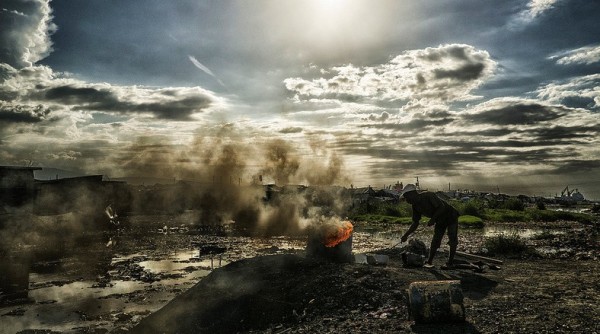
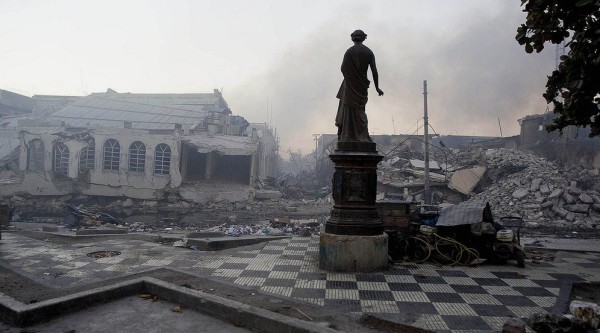
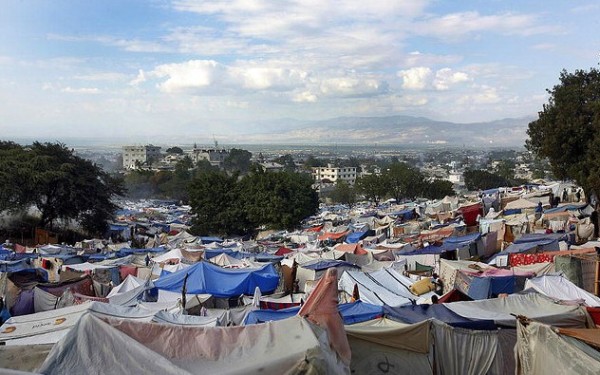

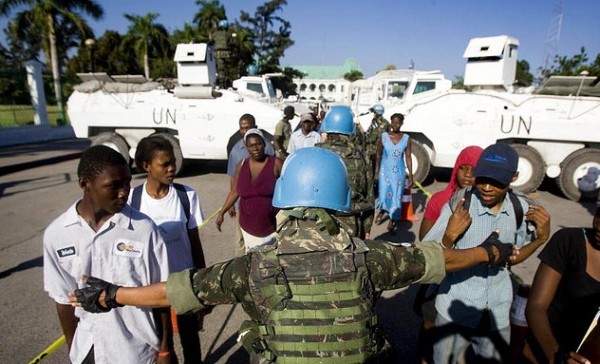
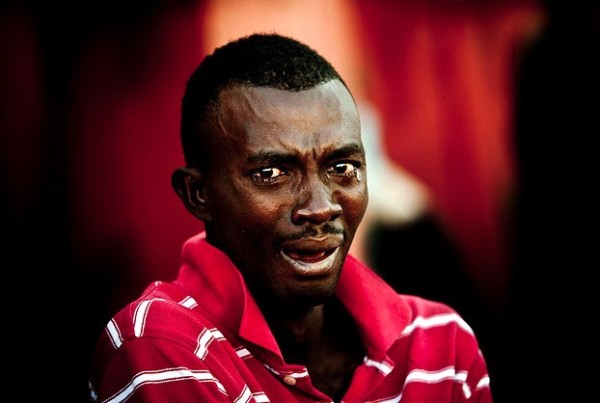
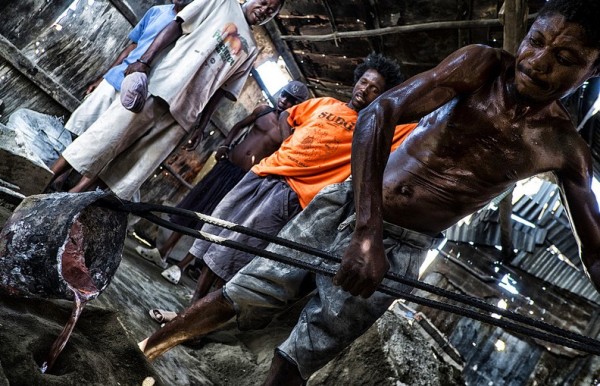
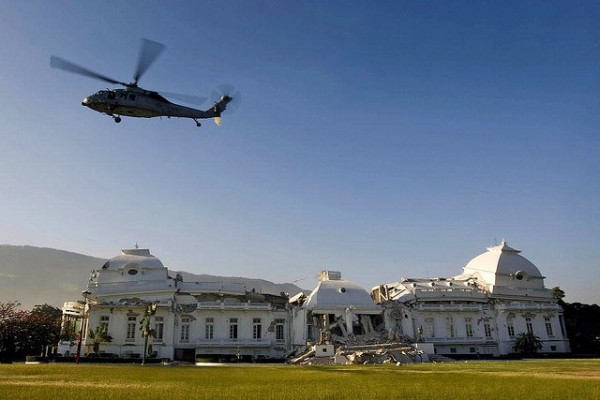

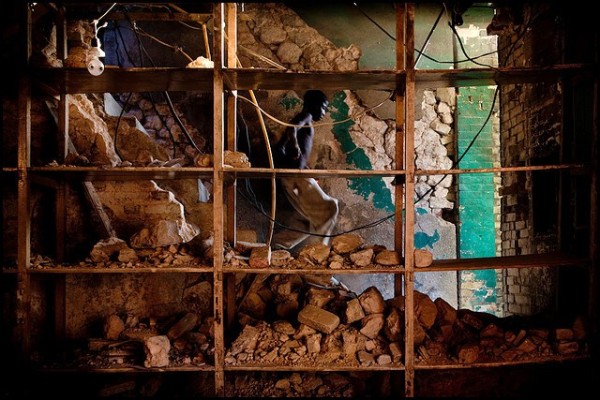


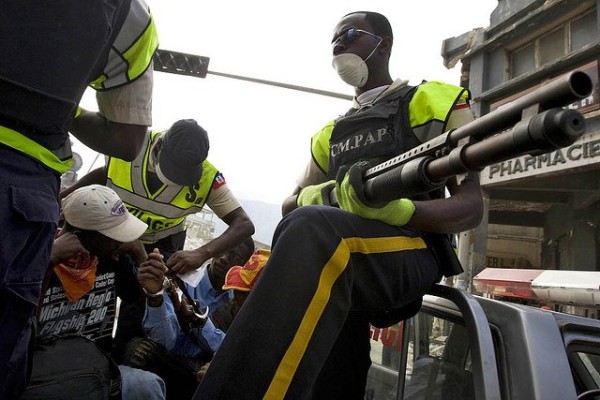
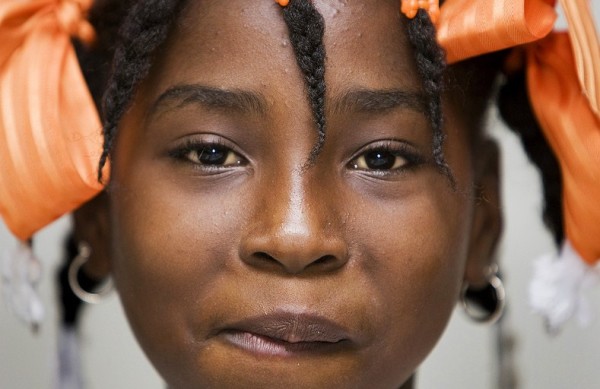
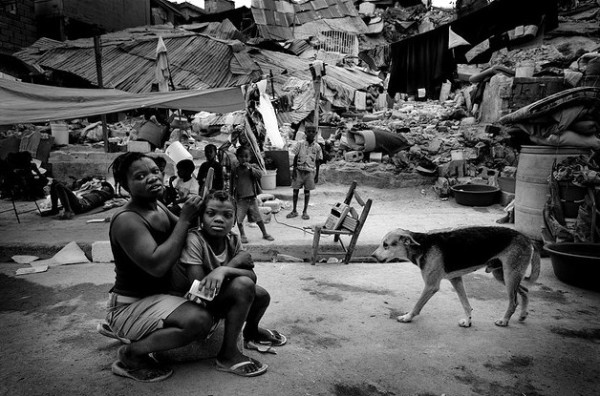
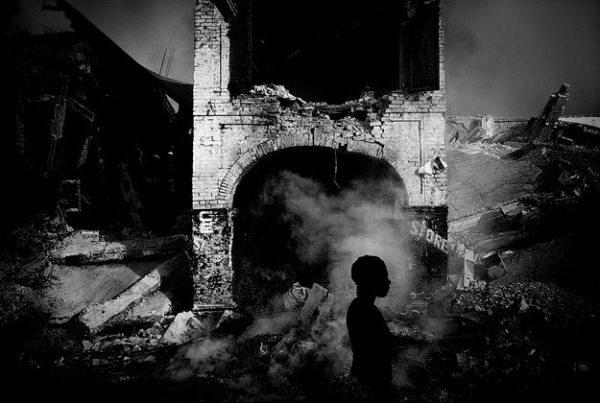
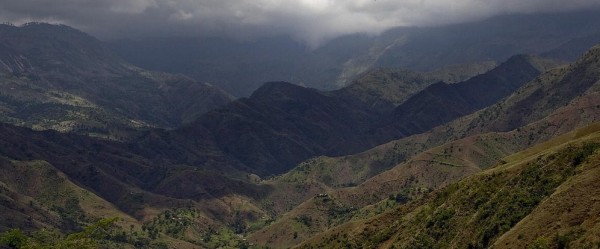
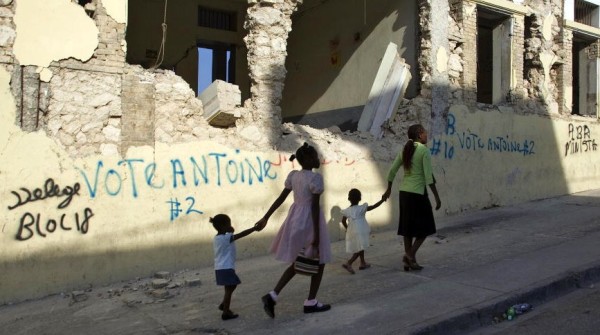
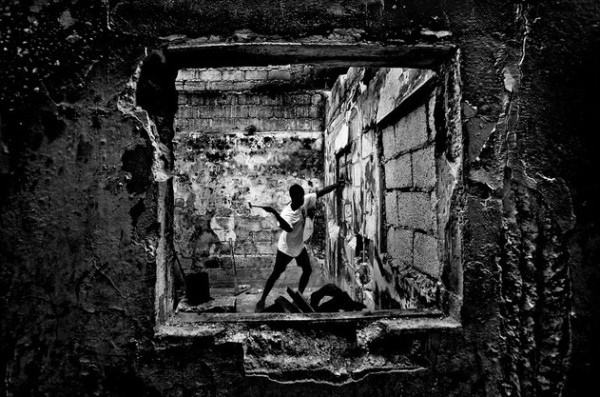
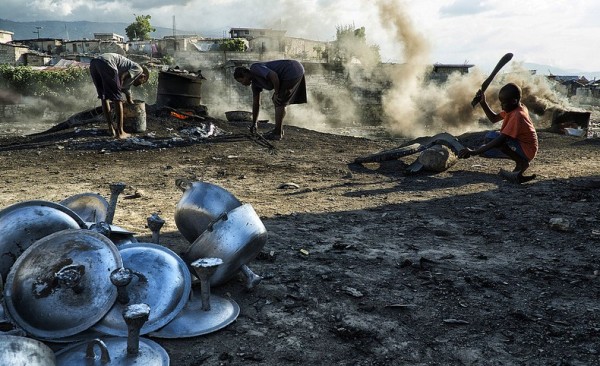











You must be logged in to post a comment Login